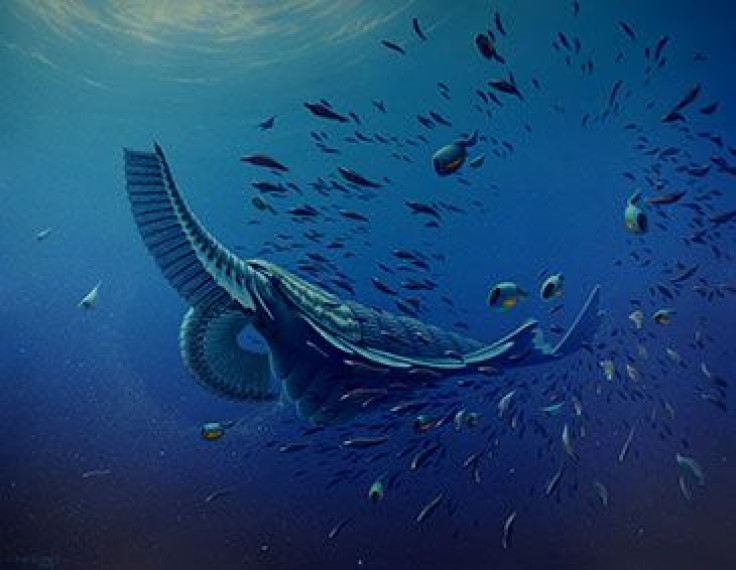520 Million-Year-Old Sea Creature Pulled Off A ‘Major’ Evolutionary Feat To Become ‘Top’ Predator [PHOTO]

An ancient sea creature that lived on Earth about 520 million years ago had bizarre facial appendages that it used to filter food from the ocean.
Known as Tamisiocaris, the marine animals lived during a period known as the “Cambrian Explosion,” when major animal groups suddenly appeared. The new findings, published in Nature, cite evidence that the animals evolved into filter feeders that transformed their grasping appendages into filters that could trap organisms in the water like a net.
"Tamisiocaris would have been a sweep net feeder, collecting particles in the fine mesh formed when it curled its appendage up against its mouth," Martin Stein of the University of Copenhagen said in a statement. "This is a rare instance when you can actually say something concrete about the feeding ecology of these types of ancient creatures with some confidence."
Researchers made the discovery after analyzing fossilized remains that were uncovered in Greenland in 2009. To help them understand the unusual creature’s anatomy, they created a 3D computer animation of its feeding appendage.
Tamisiocaris belongs to a group of animals called anomalocarids, which were some of the first predators on Earth. Although it measured just 28 inches long, Tamisiocaris was one of the largest predators in the world when it was in existence.
"It was a gentle giant," paleontologist and study leader Jakob Vinther of the University of Bristol told Reuters. "Even though this thing was not a whale or a whale shark, it evolved to become the equivalent."
Most anomalocarids fossils have been found in the Burgess Shale, a fossil-rich site in the Canadian Rockies.
"We once thought that anomalocarids were a weird, failed experiment," Nicholas Longrich, study co-author and a professor at the University of Bath, said. "Now we're finding that they pulled off a major evolutionary explosion, doing everything from acting as top predators to feeding on tiny plankton."
The discovery sheds light on the diversification of species during the Cambrian period and how they evolved.
Tamisiocaris had no legs but swam using flaps on either side of the body and had large appendages in front of their mouths to capture larger prey. These appendages later became a water filtering apparatus to trap small crustaceans and other organisms.
The Tamisiocaris fossils were found during recent expeditions by co-author David Harper, a professor at Durham University.
“The expeditions have unearthed a real treasure trove of new fossils in one of the remotest parts of the planet, and there are many new fossil animals still waiting to be described,” he said. “Our new understanding of this remarkable animal adds another piece to a fascinating jigsaw puzzle.”
© Copyright IBTimes 2024. All rights reserved.












